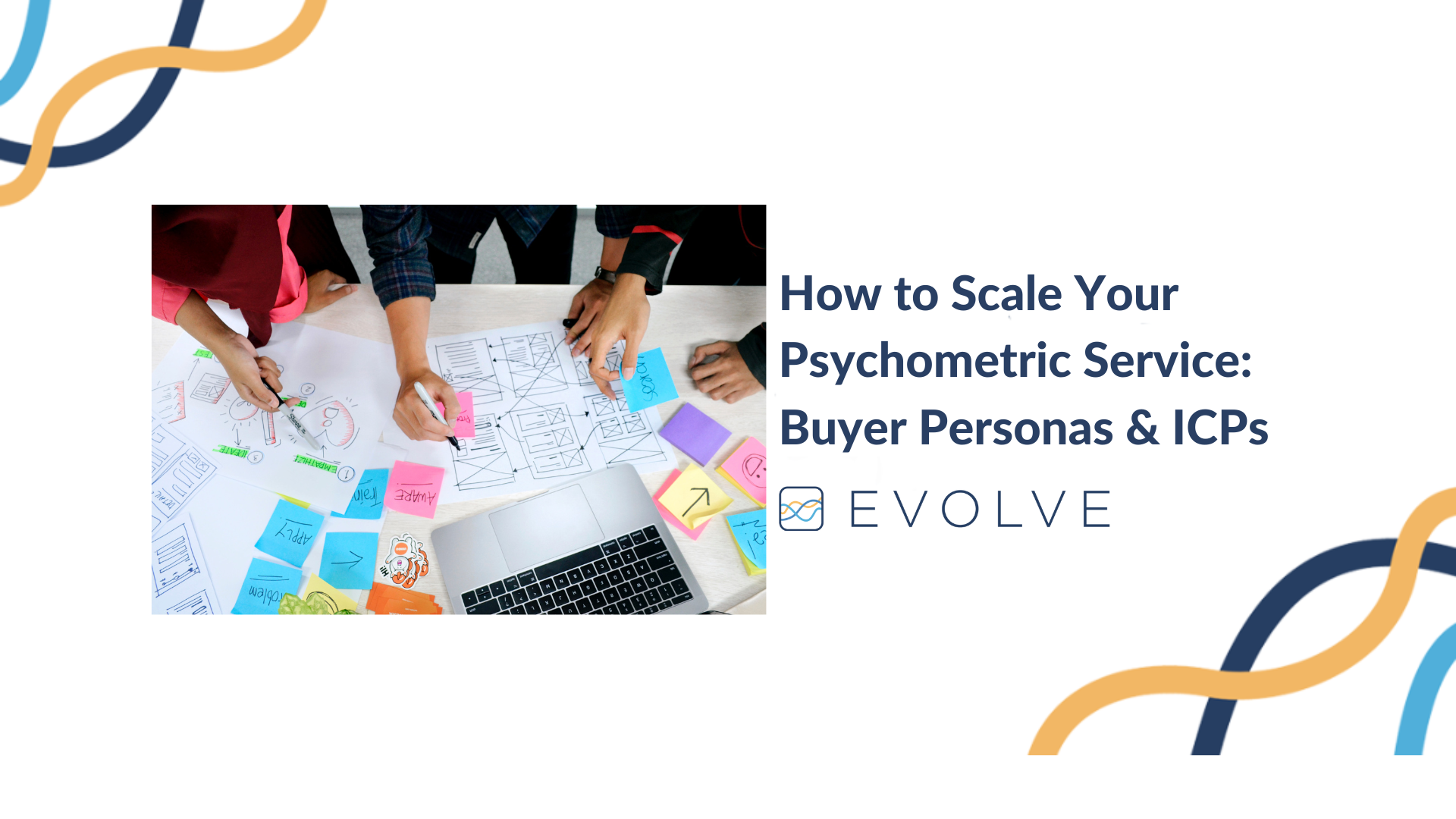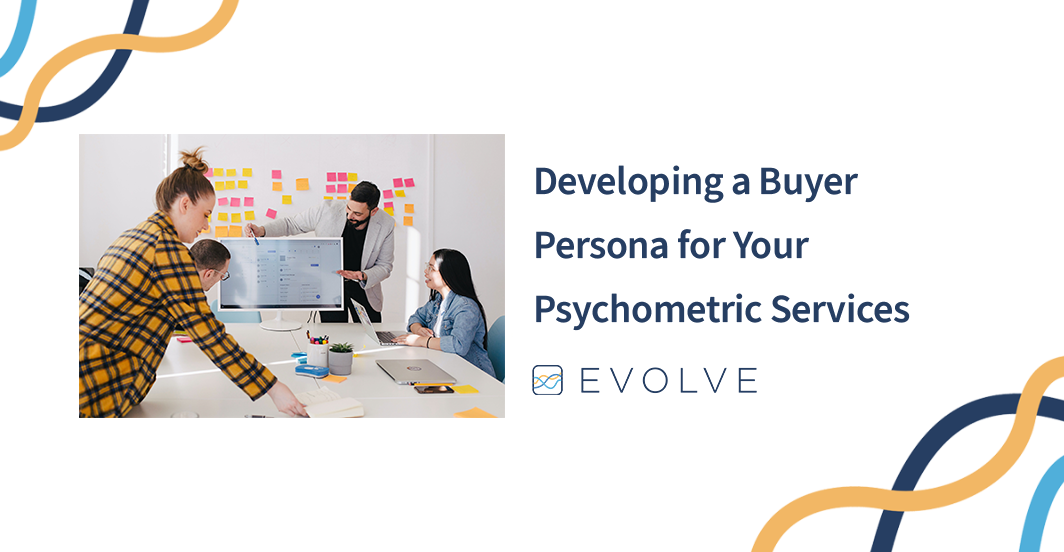How To Scale Your Psychometric Service: Building A Value Proposition
Building a company, department, division or even a personal brand is tough. Not only do you have to put in a tremendous amount of work to get it off the ground, you also need to look after your customers, go to market effectively, make all the right promises, differentiate yourself, and, of course, make a profit!
In this 7-part blog series, we’ll break down some of the elements that go into scaling a psychometric service.
1. Mastering a Clear Value Proposition
What is a value proposition?
It's the promise you make to your customers - the value you are committing to deliver to them.
Typically, a value proposition is defined by an organisation’s founding members. These are the people who hold the passion and vision of the company and have a clear view and understanding of its value.
It’s hugely important to fully understand the value that your company is providing, and how you can effectively communicate that value with both internal and external stakeholders. For companies that are looking at creating a value proposition, we strongly recommend answering the following key questions:
- Who am I trying to sell to?
- What customer problems do I solve? How do I stand out?
- Why do my existing customers work with me?
Once you’ve answered these questions, take a moment to sense-check that others would recognise you by this statement.
How can I formulate my own value proposition?
A typical value proposition is created using the following formula:
For [Target client/industry]
Who [Statement of need or opportunity],
Our product is a [Product name/description]
That provides [The value you provide]
Unlike [Reference to competition]
Our product [Statement of differentiation/features]
Here’s an example of a value proposition created with this formula:
For internal recruitment teams who are frustrated by high staff attrition rates and poor‑quality new recruits, our sales-focussed psychometric assessment highlights strong candidates and removes poor-fit candidates with a robust, measurable, and repeatable assessment process. Unlike our competitors, we only focus on assessing salespeople.
When creating your value proposition, it’s important to use clear, succinct, and
accurate language. This will make it straightforward to convey to stakeholders, and far easier for everyone to understand and remember!
Making the Vision a Reality
In his programme Traction, Gino Wickman suggests that the more clearly defined an
organisation’s vision is, the more your employees can make it happen.
Wickman formulated a list of statements relating to organisational vision, that companies can grade themselves against. The higher the grade, the more likely the success:
Here are the statements. Go through each one and rank your company 1-5 (‘1’ being weak and ‘5’ being strong). Why not take it to your next management meeting and make it a collaborative exercise!
• We have a clear vision in writing that has been properly communicated and is shared by everyone in the company.
• Our core values are clear, and we are hiring, reviewing, rewarding, and firing around them.
• Our core business is clear, and we keep our people, systems, and processes aligned and focused on it.
• Our target market and our definition of our ideal customer are clear and our marketing and sales efforts are focused on it.
• Our 3 unique differentiators are clear and all of our marketing and sales efforts
communicate them.
• We have a proven process for doing business with our customers. It has been named and visually illustrated, and all of our salespeople use it.
• We have systems for receiving regular feedback from customers and employees.
2. What Problems Are You Solving?
Remember, sales is always only ever about solving problems, and this is always what buyers are looking to achieve. Can you write down the problem(s) you’re solving?
Here are a few problems that we know exist to which the solution is online assessments.
For example, are you helping your customers:
- Reduce staff turnover?
- Recruit better-fit employees?
- Free up management time in early interview stages?
- Provide a fixed, repeatable, and scalable framework environment for running
assessments? - Give management a way to evaluate people for promotion or bonuses and
compensation? - Providing partners with a tool kit to grow their own businesses?
Once you understand what problems you’re solving, you'll be able to build your product, make decisions on how to support the service, change your website to reflect the promises you’re making, and start to blog to be helpful, useful, and interesting.
3. Foster Sustainable Growth Without Neglecting Your Value Proposition
When you successfully communicate a strong value proposition to your prospects, growth will often follow. Of course, it's not guaranteed, and it’s certainly not permanent; there are, however, a few ways to promote sustainable growth:
- Focus on the right markets
It is vital to ensure that you are focusing on the right markets for your business. Your value proposition should help keep you on track. Take some time to check that you've thought of all the markets your product/service aligns with. Missing a key customer segment, geography, adjacent category, or service could be catastrophic. - Review your business model
In order to maximise growth and profit, you might consider changing product, finding new market segments or making adjustments to pricing. However, before you embark upon that journey - have you fully explored if the business model you currently adopt (or intend to adopt) is really the best one for you and your customers?
We’ve all experienced the ‘subscription revolution’ over the past few years: it’s a model we’ve all become accustomed to. This could certainly be worth exploring for your organisation.
Adopting a subscription model for your products and services could be potentially far more lucrative than investing time and resources into building new products. Successful brands like Netflix and Spotify are subscription services that pioneered this business model within their industries. Whole industry business models such as Software-as-a-Service (SaaS) have now emerged and become the norm.
Have you fully considered the ways in which customers are purchasing your products and services? Can you find a better, more suitable model for your customers? How would using this model affect your bottom line?
Here’s an important question to consider:
“If you were to compete against yourself from tomorrow, what would you do differently to compete?” - Build from customer needs, not existing products
Don’t try to shoehorn existing products into new markets – they often don’t fit. Instead, think about what customers in different markets really need. It’s important to take the time to fully understand the problems and challenges customers face, and then consider the best ways of solving them; business is only ever about solving people’s problems!
Start to think about how your product or service makes your customers’ lives easier in very clear, specific ways - not just its features.
When your product is built with solving customer problems in mind, you’ll provide a much more relevant overall solution to their challenges and aspirations, and in turn, they’ll be able to extract more value from your offering.



